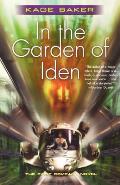 From
time to time, I take my pile of newly-read books and post reviews. As I
sat down recently to do this, I realized that not a single one of them
was a true stand-alone. They were either the first book at led to others
set in the same world (Kage Baker’s The Garden of Iden, her debut novel and also the first “Company” novel; Garth Nix’s Sabriel, the first book of the “Abhorsen” trilogy); or they were middle books in a series (Bernard Cornwell’s Sharpe’s Prey and Sherwood Smith’s Blood Spirits). The
Baker and the Nix novels differ in that Baker’s story is complete in
itself. No previous knowledge of this world is necessary and the reader
is left in a place of rest. Sabriel, on the other hand, clearly is part of a defined trilogy – one long story arc, with only a partial resolution at the end.
From
time to time, I take my pile of newly-read books and post reviews. As I
sat down recently to do this, I realized that not a single one of them
was a true stand-alone. They were either the first book at led to others
set in the same world (Kage Baker’s The Garden of Iden, her debut novel and also the first “Company” novel; Garth Nix’s Sabriel, the first book of the “Abhorsen” trilogy); or they were middle books in a series (Bernard Cornwell’s Sharpe’s Prey and Sherwood Smith’s Blood Spirits). The
Baker and the Nix novels differ in that Baker’s story is complete in
itself. No previous knowledge of this world is necessary and the reader
is left in a place of rest. Sabriel, on the other hand, clearly is part of a defined trilogy – one long story arc, with only a partial resolution at the end.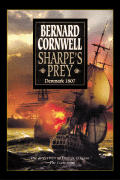 The Cornwell is clearly part of an ongoing series that follows one primary character through a certain historical time period, with
occasional minor characters, both allies and villains. It is
interesting because Cornwell’s first “Sharpe” book began in the middle
of the hero’s career. After writing a number of novels, he returned to
an earlier time and also “between times,” novels interpolated between
previously-published episodes. Each book centers on a battle or other
specific, time-limited military event in the Napoleonic Wars and
adjacent time periods, and although it is enjoyable to meet old
“friends,” there is little sense of development in plot or tension from
one story to the next. True, the central character matures with
experience, but his personal arc is not the driving force of the novels.
The escalating tension, climax, and outcome of each battle provide the
structure for the plot.
The Cornwell is clearly part of an ongoing series that follows one primary character through a certain historical time period, with
occasional minor characters, both allies and villains. It is
interesting because Cornwell’s first “Sharpe” book began in the middle
of the hero’s career. After writing a number of novels, he returned to
an earlier time and also “between times,” novels interpolated between
previously-published episodes. Each book centers on a battle or other
specific, time-limited military event in the Napoleonic Wars and
adjacent time periods, and although it is enjoyable to meet old
“friends,” there is little sense of development in plot or tension from
one story to the next. True, the central character matures with
experience, but his personal arc is not the driving force of the novels.
The escalating tension, climax, and outcome of each battle provide the
structure for the plot.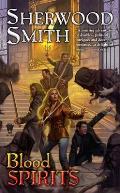 Smith’s Blood Spirits is the middle book of a three-book series (Coronets and Steel; Blood Spirits; Revenant Eve). The “Dobrenica”
books are not a true trilogy, nor are they a sequence of independent
episodes. Enough information is provided so that it is not absolutely
necessary to read the books in order, but it is definitely better to do
so. There is a degree of continuing momentum from one book to the next,
so the books have less of an episodic nature than do the Cornwell
novels.
Smith’s Blood Spirits is the middle book of a three-book series (Coronets and Steel; Blood Spirits; Revenant Eve). The “Dobrenica”
books are not a true trilogy, nor are they a sequence of independent
episodes. Enough information is provided so that it is not absolutely
necessary to read the books in order, but it is definitely better to do
so. There is a degree of continuing momentum from one book to the next,
so the books have less of an episodic nature than do the Cornwell
novels.I’ve been thinking about the whole issue of book “series” because for the last dozen years I have been continuing the “Darkover” series, created by Marion Zimmer Bradley. Especially in the early years, Marion insisted that each book had to stand on its own and that they could be read in any order. I think that’s a laudable goal, and for the most part, the early and middle Darkover books achieved it. Eventually, she began writing books that, while they may not have been part of a single overall story line, were most definitely sequels. Readers may argue with me, but I think that novels such as Thendara House and City of Sorcery fare less well if they are not considered as an extended story line begun with The Shattered Chain. To a lesser extent, Sharra’s Exile (which was itself a rewrite of The Sword of Aldones, a very early Darkover novel) is a sequel to The Heritage of Hastur.

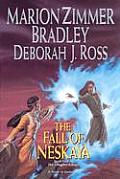 The first project I worked on (with Marion, in the last year of her life) was conceived as a trilogy (“Clingfire”), in that we wanted
to relate a very large story, how the Comyn came to adopt the Compact,
which forbade the use of distance weapons, whether physical or psychic.
As it turned out the first and second volumes (The Fall of Neskaya and Zandru’s Forge)
were separated by a generation as we set up the political background,
the alliances and feuds that would come together in a catastrophic
battle in the final book. This had the effect of beginning the second
book with a mostly-new set of characters, giving the trilogy two
beginnings and the first book the character of a stand-alone.
The first project I worked on (with Marion, in the last year of her life) was conceived as a trilogy (“Clingfire”), in that we wanted
to relate a very large story, how the Comyn came to adopt the Compact,
which forbade the use of distance weapons, whether physical or psychic.
As it turned out the first and second volumes (The Fall of Neskaya and Zandru’s Forge)
were separated by a generation as we set up the political background,
the alliances and feuds that would come together in a catastrophic
battle in the final book. This had the effect of beginning the second
book with a mostly-new set of characters, giving the trilogy two
beginnings and the first book the character of a stand-alone.In writing the next two books (The Alton Gift, Hastur Lord), I struggled with the demands of placing each story historically between already-published works and the ideal goal of making it entire in itself. Hastur Lord was based around a manuscript Marion had written when she was very ill, so the time placement and central plot were her conception; it’s one of those “here’s what happened between Book A and Book B” stories. The appeal of such stories is that established readers who love the world and its characters are happy with “fill in the blanks” stories, but the drawback is that both beginning and end points are fixed. Marion had concocted a few surprises to counteract the resulting predictability, but even so, I appreciated the challenge Cornwell faced in going “backward in time” in the life of Richard Sharpe because we already know Sharpe is going to not only survive, but rise through the ranks.
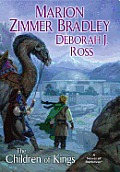 For the most recent Darkover book, The Children of Kings,
I made a concerted effort to create a stand-alone novel, one that would
be a friendly welcome to new readers unfamiliar with the world, without
disappointing long-time fans who look forward to playing with their
favorite characters. In this, I was returning to Marion’s initial vision
of the Darkover series – unrelated or minimally-dependent novels that
draw on the same world-building and sources of conflict. I used
characters who were either original or played very minor roles in
previous novels, and sent them on a journey to areas of the planet that
Marion had touched upon only lightly. The generalized tension that
permeated the early Darkover novels – the clash between cultures – is
not resolved, and indeed is not resolvable, but this specific set of
circumstances and the resulting crisis is. The reader does not have to
have read any previous Darkover novels to understand what is going on,
who these people are and what their values are, and hopefully if readers
are screaming for more, it’s because they love the world, not because
they want to know how the story ends.
For the most recent Darkover book, The Children of Kings,
I made a concerted effort to create a stand-alone novel, one that would
be a friendly welcome to new readers unfamiliar with the world, without
disappointing long-time fans who look forward to playing with their
favorite characters. In this, I was returning to Marion’s initial vision
of the Darkover series – unrelated or minimally-dependent novels that
draw on the same world-building and sources of conflict. I used
characters who were either original or played very minor roles in
previous novels, and sent them on a journey to areas of the planet that
Marion had touched upon only lightly. The generalized tension that
permeated the early Darkover novels – the clash between cultures – is
not resolved, and indeed is not resolvable, but this specific set of
circumstances and the resulting crisis is. The reader does not have to
have read any previous Darkover novels to understand what is going on,
who these people are and what their values are, and hopefully if readers
are screaming for more, it’s because they love the world, not because
they want to know how the story ends.This reminds me of a conversation I had with Margaret Chang, who collaborates with Harry Campion as M. H. Mead. They write computer/virtual-reality based science fiction and call their collective work a set rather than a series. Each story takes place in the same world in approximately the same time period, and is complete in itself. Minor characters from one story may appear in the next, and in terms of time-line, there are occasional references to events, but in the way any background or history might be included.
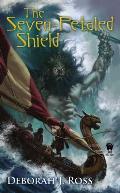 This summer, the first volume of my original fantasy trilogy, The Seven-Petaled Shield, will be released by DAW. It is a true trilogy,
one long story arc with incomplete resolution at the end of the first
two books. Fortunately, DAW is committed to bringing out the subsequent
volumes at fairly short intervals so I will not be obliged to hire
bodyguards to protect me from frustrated readers, demanding to know how I
could make them wait to find out what happens next. The trilogy is
itself based on a series of short stories that I wrote for the Sword & Sorceress
anthologies. I’d begun with a tale based in the conflict between the
Romans and the Scythians, each culture with its own magic, and the more I
wrote, the larger the landscape and its possibilities became. I’ll be
bringing these four short stories together in a collection, Azkhantian Tales, in June from Book View Café.
This summer, the first volume of my original fantasy trilogy, The Seven-Petaled Shield, will be released by DAW. It is a true trilogy,
one long story arc with incomplete resolution at the end of the first
two books. Fortunately, DAW is committed to bringing out the subsequent
volumes at fairly short intervals so I will not be obliged to hire
bodyguards to protect me from frustrated readers, demanding to know how I
could make them wait to find out what happens next. The trilogy is
itself based on a series of short stories that I wrote for the Sword & Sorceress
anthologies. I’d begun with a tale based in the conflict between the
Romans and the Scythians, each culture with its own magic, and the more I
wrote, the larger the landscape and its possibilities became. I’ll be
bringing these four short stories together in a collection, Azkhantian Tales, in June from Book View Café.Which brings me to the point of writing a series, or sequels, or a “set” of stories. Sometimes when we create a world, whether it is for a novel or a shorter piece, we realize how much of it exists “off the page” and we come to love it so much we want to go explore. Or to stay in the same location or time period and delve more deeply into it. Or simply to run away to our favorite imaginary place with our favorite characters. These multi-novel variations allow us to do that, to create related stories, to use and build upon our vision of a world. Incidentally, I have been known to bribe secondary characters who are threatening to run away with the plot with their own stories. Knowing that I can “spin off” such tales helps me to focus on this story, to keep plot and subplot from burgeoning into a shapeless and planet-consuming proteus. Sometimes I find that secondary characters or places mentioned only in passing turn out to be more interesting, more complex and ambivalent, dark and transcendent, than my original conceptions.
The pitfall of writing a series (etc.) when a writer is still new and learning craft is that working in an established world means we don’t create new ones, and world-building is a skill that improves with practice. If your first story is the only one you ever want to write, that’s less of a problem than if you are like me and your head is filled with a spectrum of story ideas, each screaming to be told. In that case, I think you do yourself a disservice in committing years of your formative literary life to one vision, instead of pushing to make each new world more complex and fascinating. One of the benefits of writing short fiction is the relatively small time investment in each story, as compared to working at novel length. Mistakes cost a far smaller fraction of your overall career, and each story is an opportunity to start fresh, aim higher, and twist reality in a different way.
No comments:
Post a Comment